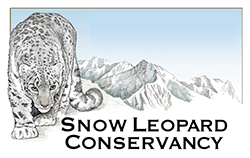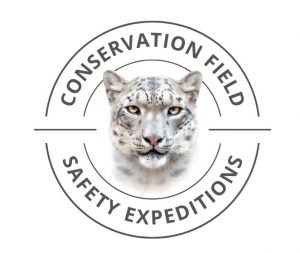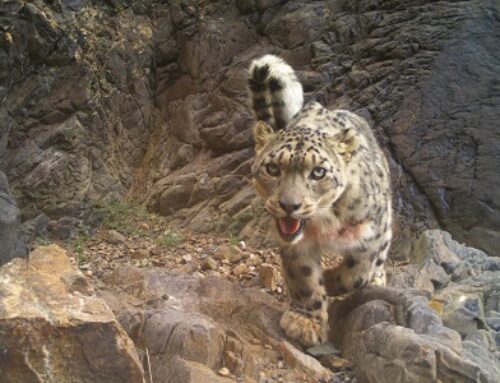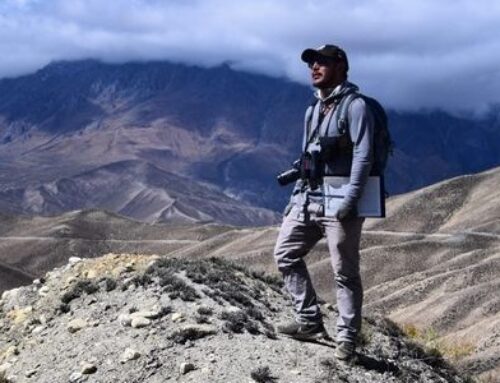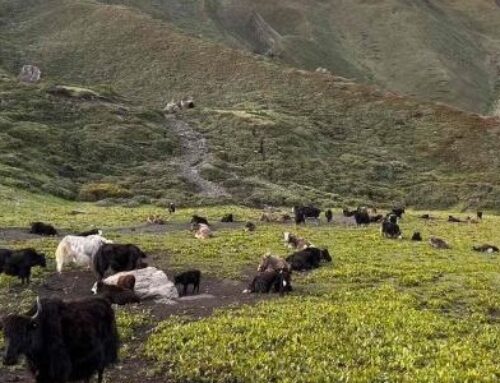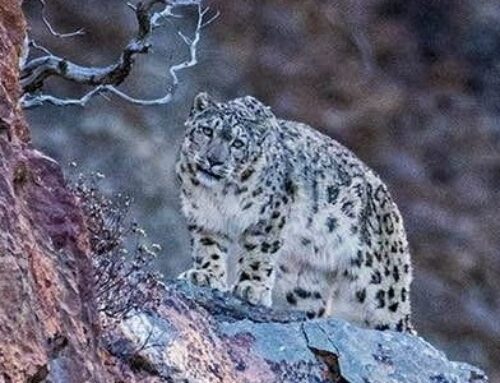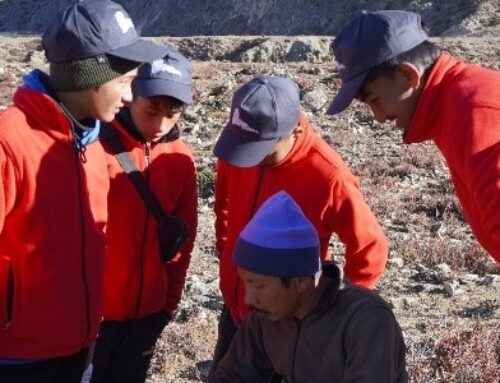by Katey Duffey
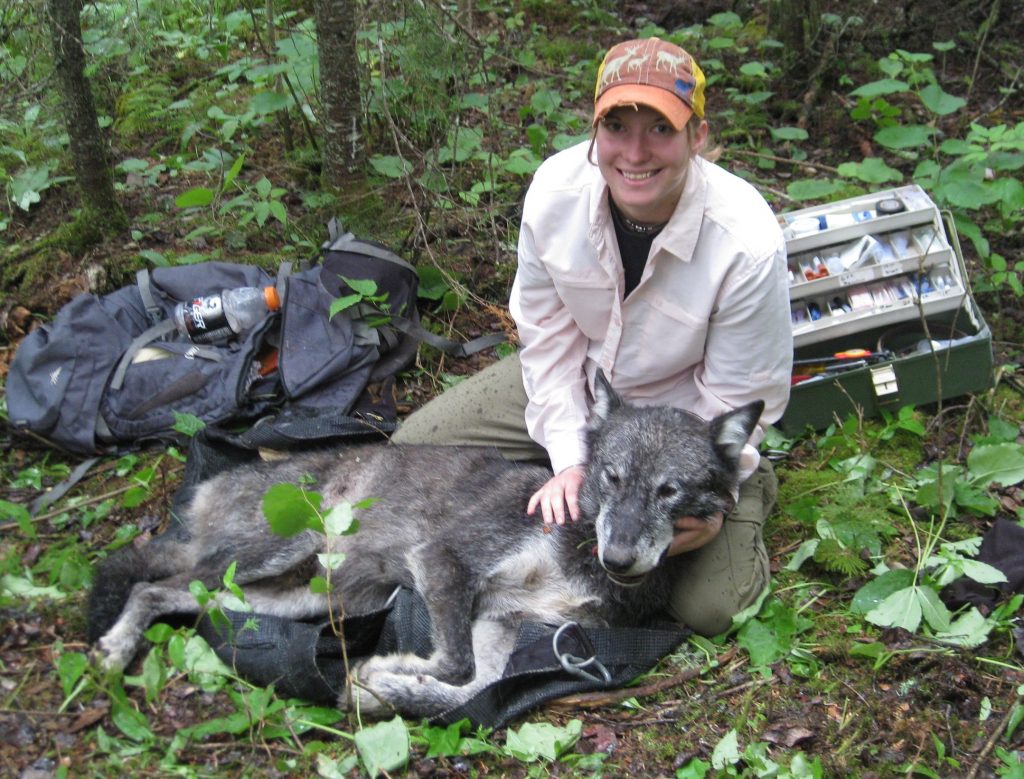
Katey Duffey is an American zoologist with an interest in human-carnivore coexistence and One Health. Katey fell into snow leopard research while earning her master’s degree in Zoology through Miami University. For her final project centered around human-wildlife conflict mitigation, she worked with the Mongolian Academy of Sciences and Irbis Mongolia to survey for snow leopards in western Mongolia and study snow leopard-herder interactions. Since earning her master’s degree in 2014, Katey has continued her independent research, working with local organizations in the snow leopard range and applying her interests to other carnivore species in different environments. Katey was also a contributor to the book Searching for the Snow Leopard, Guardian of the High Mountains, published in partnership with the Snow Leopard Conservancy in 2020.
Conducting wildlife research or working with communities around a project for a species is exciting and rewarding. However, it can also be dangerous. My passion for wanting to work in snow leopard habitat comes with the reality of extreme environmental risks that were not taught in college or even by field partners. For many field scientists, it is the individual’s responsibility to be prepared for fieldwork in their project’s environment and know how to handle potential issues that may occur. Too many find out the hard way what type of gear and clothing they should have had, what type of weather, terrain, and altitude they should have been aware of, and that locals may not be reliable or knowledgeable in the event of dealing with injuries, illness, or evacuation.
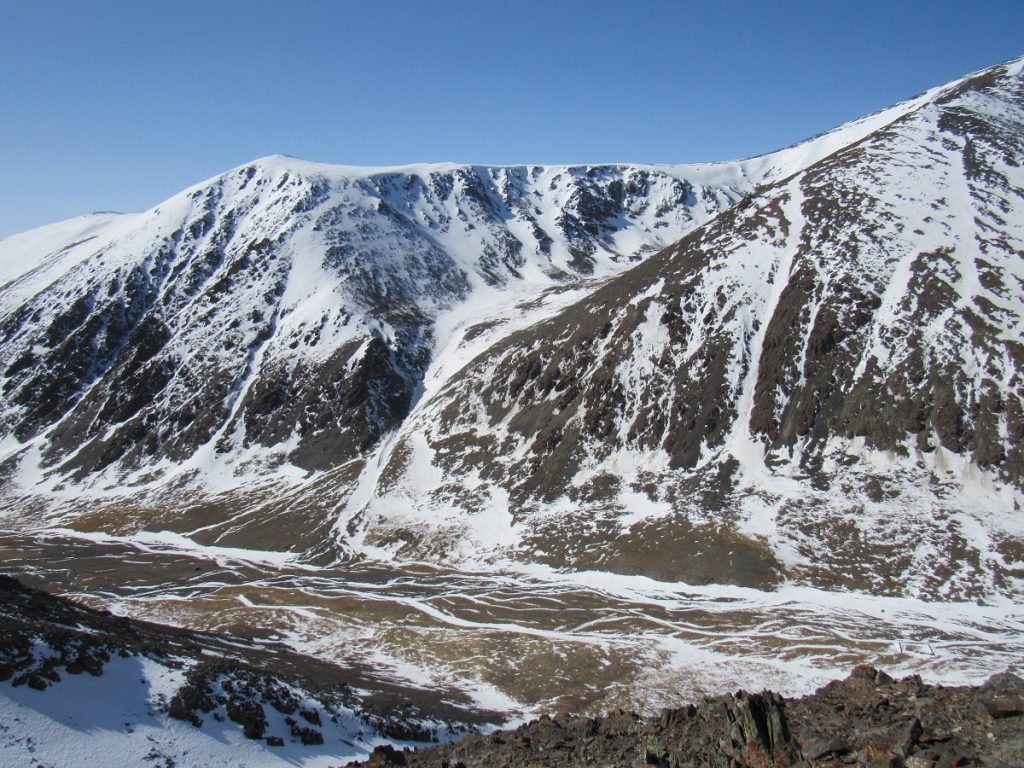
Mongolian Altai – Photo: Katey Duffey
I think of my past snow leopard sites and focus beyond an often-romanticized experience of camping in a ger or tent and hiking up glittering snow-covered valleys and ridges to follow where an elusive big cat has tread. Outside of applying scientific field methods, there is everyday camp life to consider that may not have the best hygiene practices. The temperature in the winter can drop below -40 degrees Celsius and requires a layering system to avoid sweating while hiking and staying warm while resting or during data collection. Altitude sickness is a possibility that does not discriminate between prior mountain experience or fitness levels. Snowstorms and avalanches can strike at any time, and terrain features hidden under snow can be deceiving to walk upon and potentially fatal. As breathtaking as the environment is and as important as recording data is, safety should always be a priority. This is particularly true for field sites that are many hours from a hospital, when teammates may not all speak the same language to properly express concerns, and communication is unpredictable depending on signal availability. The home of snow leopards is beautiful in an ethereal, otherworldly way, but it is also incredibly unforgiving for the unprepared and complacent. The same can be said for many other environments of remote field sites.
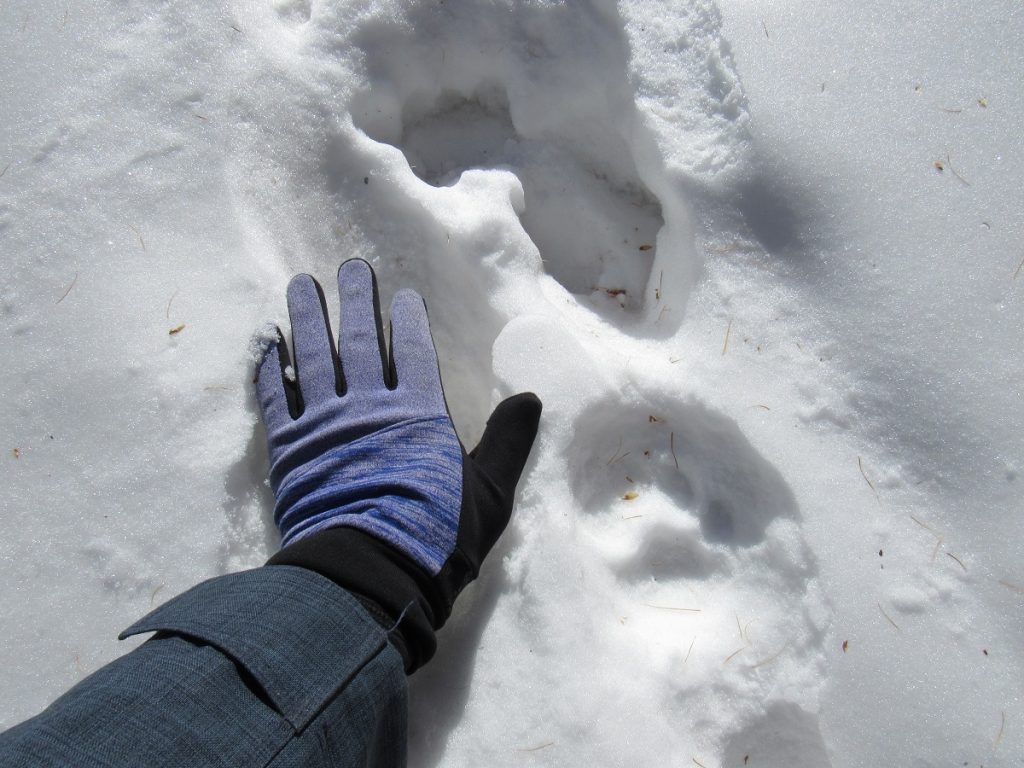
Photo: Katey Duffey
This brings me to why I co-developed a new company. In the conservation field, especially as an independent scientist, I have learned to maintain an open mind to different job possibilities and adapt to project or job changes. To progress in any career, there are times when you need to take a step into the unknown to discover opportunities you never would have considered before. Some of these opportunities may stem from a seasonal job, a field project collaboration, or even from someone unconnected to a project whom you happen to meet along the way. Also, as an independent scientist, I have learned the value of broadening my skillsets and having a multidisciplinary network of colleagues.
During my last semester of my master’s program in 2014, I had the privilege of working with Mongolian Academy of Sciences and Irbis Mongolia to survey for snow leopards and interview herders about conflict with snow leopards and wolves. I returned for another season with those partners in 2016 and then for a third snow leopard survey with Green Initiative NGO in 2017 to aid with reconnaissance in the Altai Mountains. It was at the end of that fieldwork that I met someone who would become a great friend and new colleague for different work to which I could apply my background in conservation and wilderness medicine. My small team had to return from our fieldwork a little early because the valleys were snowed in too much for access. Checking into the same small hotel in a remote town that did not see many foreign visitors during the year, was Andrew Wood (Woody). He was working in that region as the health and safety consultant for a wilderness survival television series. We met for dinner, and our common interests in working in austere environments, wilderness medicine, and both of us being military veterans allowed us to click. Woody was equally as fascinated with my snow leopard work and other past wildlife work experiences as I was with his expedition work. We stayed in touch after that and soon began travelling to other countries, including Kazakhstan, for more snow leopard surveys, where I received more training in expedition safety skills that I could apply to the conservation field, and he learned more about the conservation world.
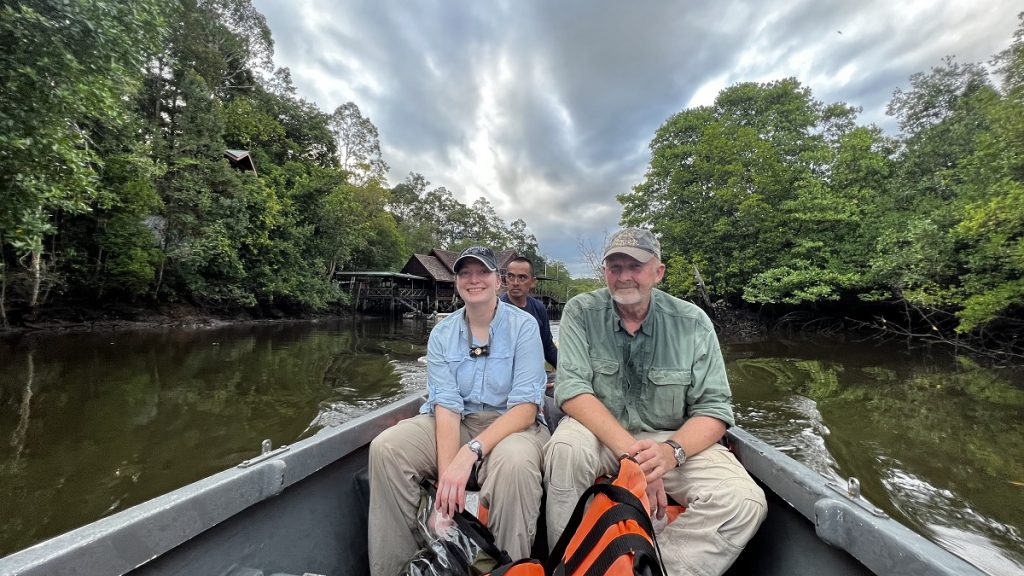
Woody and Katey in Borneo – Photo: Katey Duffey
It was our joint interest and realization of the many pitfalls that can catch the unaware or untrained that inspired Woody and I to develop our field course company Conservation Field Safety Expeditions. Our new company teaches wilderness safety in a variety of environments while partnering with conservation organizations to immerse students in real-world fieldwork experiences. We do not want field scientists or even outdoor enthusiasts with an interest in conservation to be unprepared for worst-case scenarios. We want them to be prepared, to be able to manage any situation, and come out of it fit and well.
In summary, our courses cover multiple backcountry skills, first-aid, field methods, expedition planning, and health and safety at an affordable cost over a period of ten days. College students can receive a detailed itinerary of a course to submit for potential school credits as well. Training and methods are catered to the specific habitat of that course and have a species-focused theme, be it in the jungle of Thailand, the mangrove of Borneo, the mountain forest of Bulgaria, the steppe and mountains of Kyrgyzstan, or the desert of Namibia, to name some of our first locations in a growing list of partnerships. Any conservation information gleaned along the way is donated to our host conservation partners in each country.
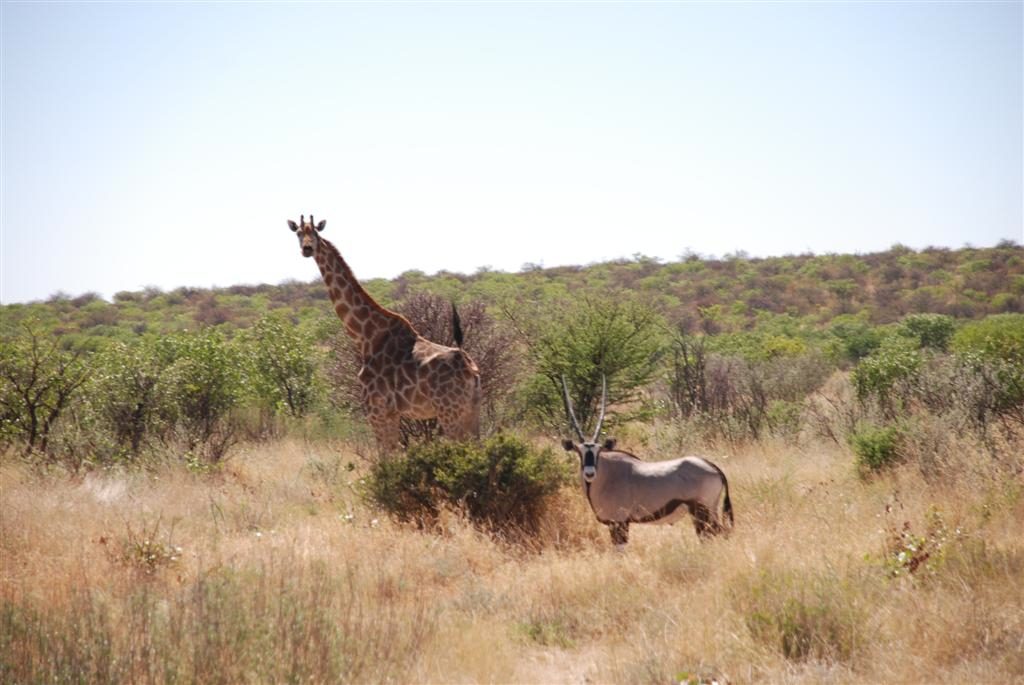
Namibia – Photo: Andrew Wood
